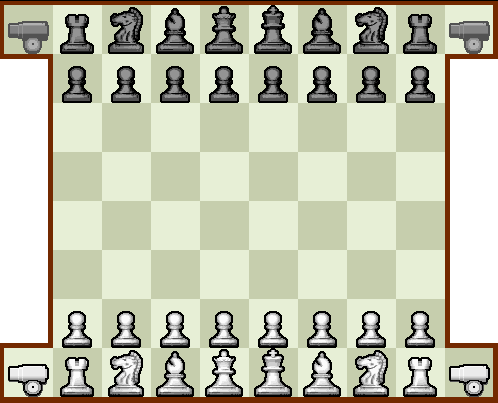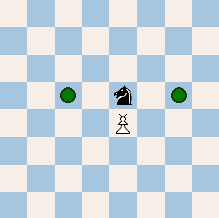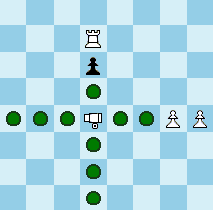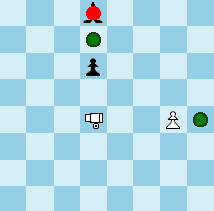

In Gustavian Cannon Chess the rules are the same as in orthodox chess, except that two Swedish Cannons per player are placed on the extra squares. After having jumped any piece, the Swedish cannon can slide and capture like a rook. However, if no jump move exists it's allowable to slide like a rook, but without capturing. The Swedish Cannon has about the same value as a bishop (preliminary estimate). Pawns can, additionally, promote to Cannon.
Extended castle: when castling the king may jump three squares, but it can also jump two as usual. The rook ends up on its usual square. The extended castle rule makes play on the wings easier to achieve. The king can rapidly take control over the corner square.
The Swedish Cannon can take active part early in the game, so one ought to introduce it early. The Cannon can be exchanged for a light piece that has acquired a good position, or it can threaten an enemy rook on an half-open file. The Swedish Cannon is stronger than both its counterparts, the Korean Cannon and Chinese Cannon, making it easier to introduce it in a context of Western pieces. Its movement is similar to the Korean Cannon, but the Korean Cannon is stranded when no jump moves are available. This cannot befall the Swedish Cannon while it is then, and only then, allowed to slide like a rook, but without capture.
Fianchetto can be a good idea in that it gives better protection against the enemy Cannons. Interestingly, if the enemy Cannon has no jumps, then one can sometimes position a piece so as to provide a jumping option, thus preventing the Cannon from using his right to move like a rook.
The closest relative of the Swedish Cannon is the Korean Cannon. The Swedish Cannon also appears in Swedish Cannon Chess, and in Alternative Chess. The board was invented by king Gustav III of Sweden for his own chess variant.
In another variant the Crab pawn is introduced. The Crab moves like a pawn, but if its northward movement is blocked it has two extra moves: two forward knight jumps to empty squares only (east-north-east and west-north-west). Note! It cannot capture this way. The Crab's value is slightly more than a pawn. Gustavian Cannon Chess, and the Swedish Cannon, were invented and implemented by undersigned, April 2007.
 The Crab moves like a pawn, but if its northward movement is blocked it can move to empty squares east-north-east and west-north-west.
The Crab moves like a pawn, but if its northward movement is blocked it can move to empty squares east-north-east and west-north-west.
 When the Swedish Cannon cannot jump it may slide like a rook, but without capture.
When the Swedish Cannon cannot jump it may slide like a rook, but without capture.
 As long as there are jump moves, the Swedish Cannon functions like a Korean Cannon, it both slides and captures after the jump.
As long as there are jump moves, the Swedish Cannon functions like a Korean Cannon, it both slides and captures after the jump.
• You can download my free Gustavian Cannon Chess program here (updated 2009-06-24), but you must own the software Zillions of Games to be able to run it.
• You can play Gustavian Cannon Chess online and by e-mail here.
• Don't miss my other chess variants.
© M. Winther 2007 April